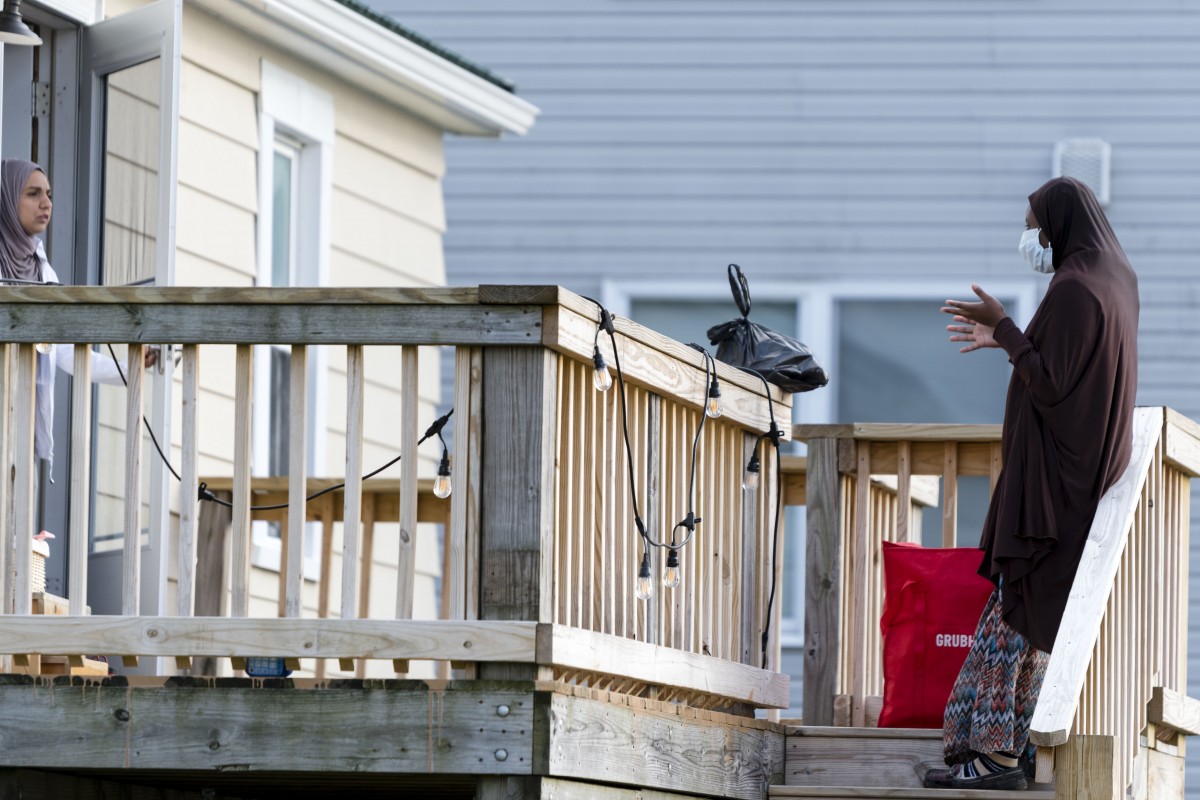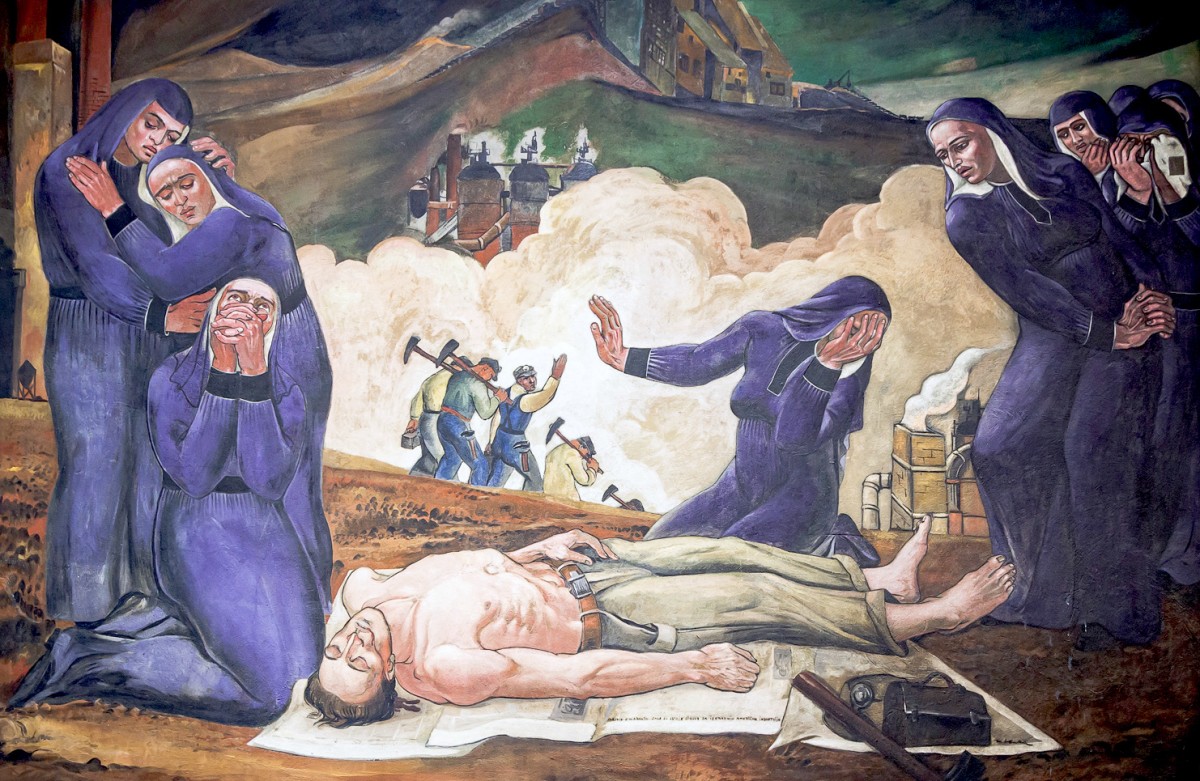Rural libraries often provide much-needed services like internet access to their communities. During the coronavirus epidemic, they find creative ways to continue with their mission, but with states pushing for reopening, some find themselves in a tough spot.
Brandi Little became the director of the Barnesville Hutton Memorial Library in Ohio last June.
Leading a library through a pandemic was certainly not on her agenda. But she’s now among the rural library directors across the country figuring out how to provide critical services to their communities while protecting their employees and patrons, planning for painful funding cuts and trying to envision what the coming months and years will look like inside their buildings.
In Barnesville, a southeastern Ohio town of about 4,000, the library is a hub of community activity, where people connect through storytimes and book clubs, research history and genealogy and rent rooms for milestone events like baby showers and birthdays.
Perhaps the most important in rural communities where broadband access is limited, libraries provide critical access to the internet for those who cannot access it at home. Many libraries are leaving their Wi-Fi on around the clock and finding ways to expand its reach further around the building, said Kate Laughlin, director of the Association for Rural and Small Libraries in Seattle, Washington.
“If you’ve got internet access in your home, it’s not on your radar that there are giant swathes of this country where there is no reliable internet access,” Laughlin said. “Especially in our small and rural libraries, the library is often the only connection (to the internet) that a person or small organization might really have reliably. They rely on the library for that.”
At North Liberty Public Library in Johnson County, Iowa, librarians have been providing laptops to patrons to use outside the closed building, said Jennie Garner, the library’s director. “It’s been well-received,” she said. “We were really happy for (a patron) who was able to submit a resume in time. That felt like a big win for us.”
A few North Liberty library staff members have been involved in providing childcare for essential workers at an adjacent city recreation center, Garner said. Her staff members wrote an education curriculum, while Garner helped write the procedures and policy for the program.
Libraries have jumped into promoting their digital services and moving programs and storytimes to virtual platforms to continue serving. North Liberty has been airing feeding time with its “Entertainment Services Librarian,” a guinea pig named Matilda.
Libraries also play an important role in workforce development, helping patrons search for jobs, create resumes and apply for unemployment. Libraries face funding challenges at the time the public relies on their services the most, Laughlin said.
“Every single time there is a recession of any kind, this happens because of the funding sources of most libraries and schools. Things get very lean; budgets get frozen … All those folks who no longer can afford the internet connection at home or ordering the book online when they want it, are coming to the library. There is going to be such a need for job searching skills, resume writing skills, job placement, workplace development – this is all library stuff. Across the board, we will see a boom in library business.”
While most library buildings are closed across the country, the level of their operations has varied from state to state. Those with strict stay-at-home orders are now starting to roll out curbside service; others have provided it since closing their buildings in March. Libraries in some places such as Florida are beginning to open their buildings to patrons while encouraging them to wear masks and not linger.
“It’s all over the map,” Laughlin said. “The library directors themselves are looking to the facts and they are pretty much coming to the same conclusion with very few expectations, I would say, it’s very difficult to impossible right now to control the social distancing and the disinfecting of hard surfaces for a library to be able to open to the public.”
However, some are being asked to open.
“I had a call last week from a director. She is responsible for 21 counties in her state, and she’s being told they have to reopen,” Laughlin said. “She knows in her heart of hearts she can’t keep those staff members safe and they should not be inviting their community into the library and they will ultimately, most likely, be contributing to the current wave of infection or to a secondary wave and she is powerless to do anything about it because their government officials are saying this is what will happen.”
So the libraries are dealing with these difficult decisions the best they can, gathering personal protective equipment for their staff, figuring out how many people can come into the building and how to keep them socially distant.
North Liberty Public Library has ordered 7,000 face masks for patrons. They haven’t set a date to reopen yet.
In Barnesville, Brandi Little posted on Facebook that her library will begin curbside pickup next week. She’s working on a plan for the annual summer reading club, as it is more important than ever to keep kids reading. She knows people are anxious for their library to return.
“It’s a lot to think about and work through,” she said. “We have to get creative and figure out ways to help the community.”
Tracy Staley is a writer and communications professional in Dayton, Ohio, by way of Hazard, Kentucky. She clings to her roots through writing, reading and music and spends her days as a digital marketer at a Lexington, Kentucky-based marketing agency. She also writes for the Rural Assembly.
This article was originally published by The Daily Yonder.



